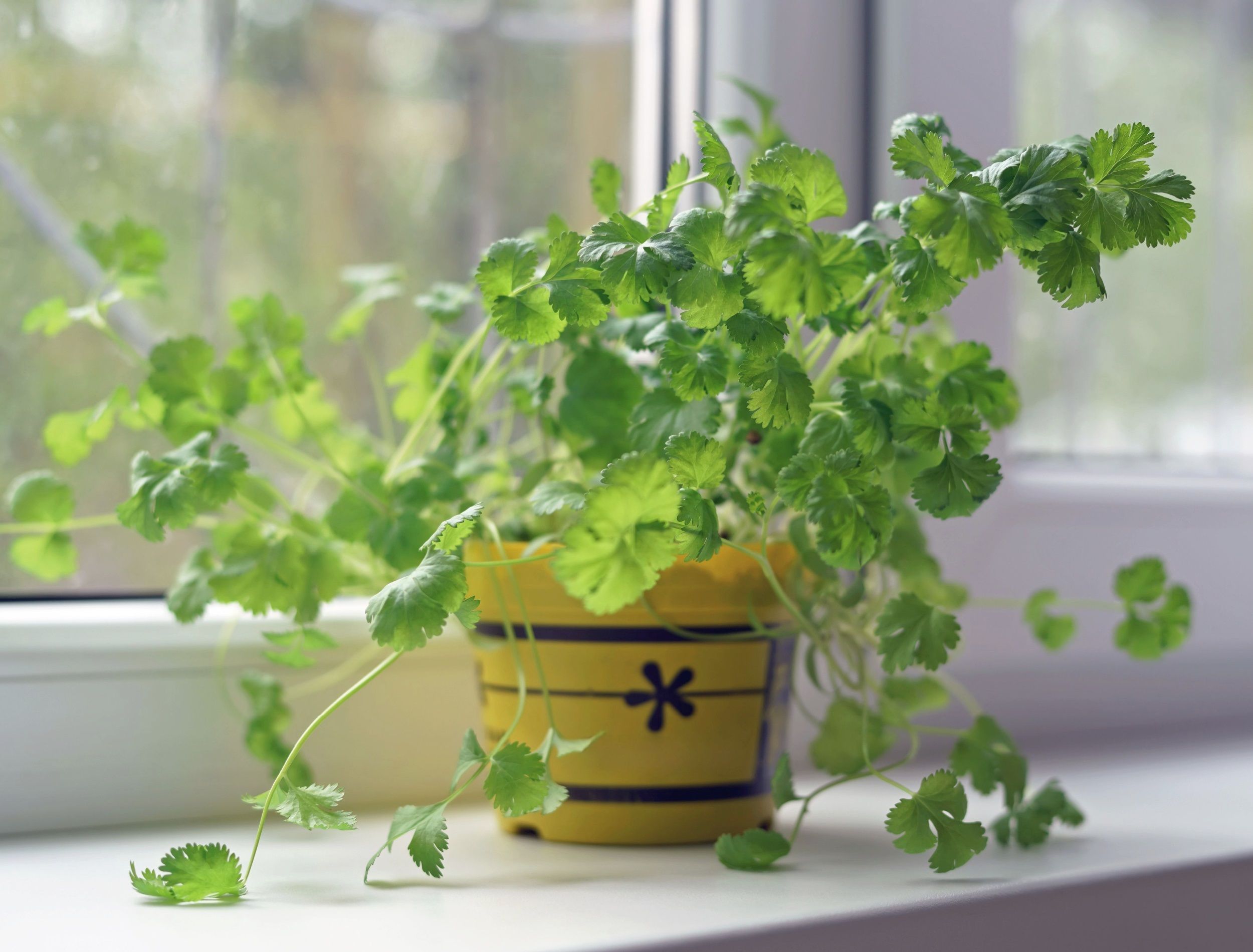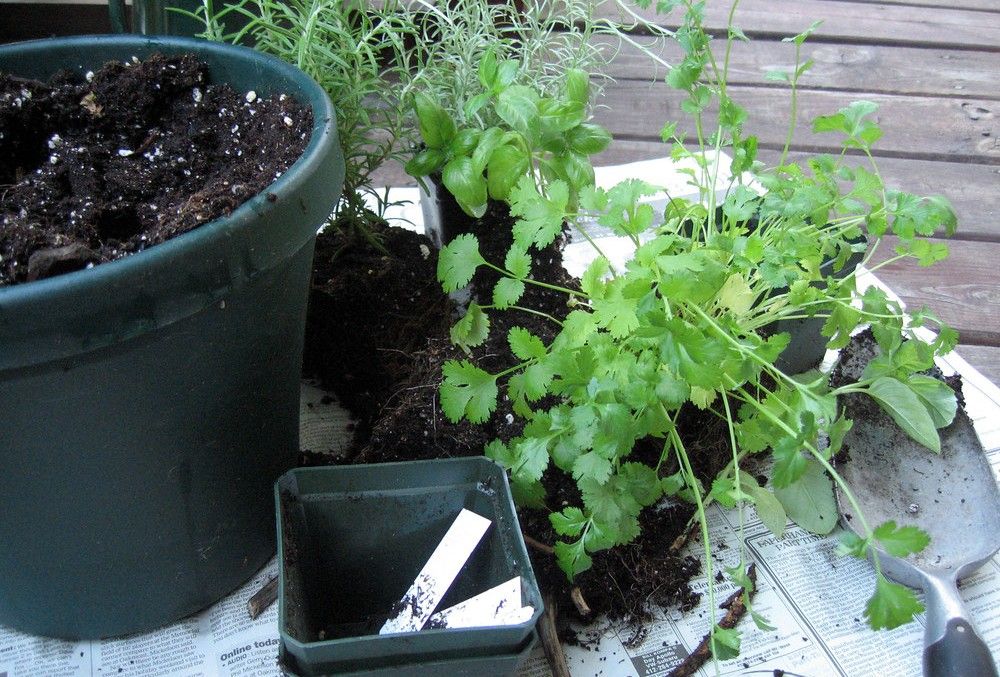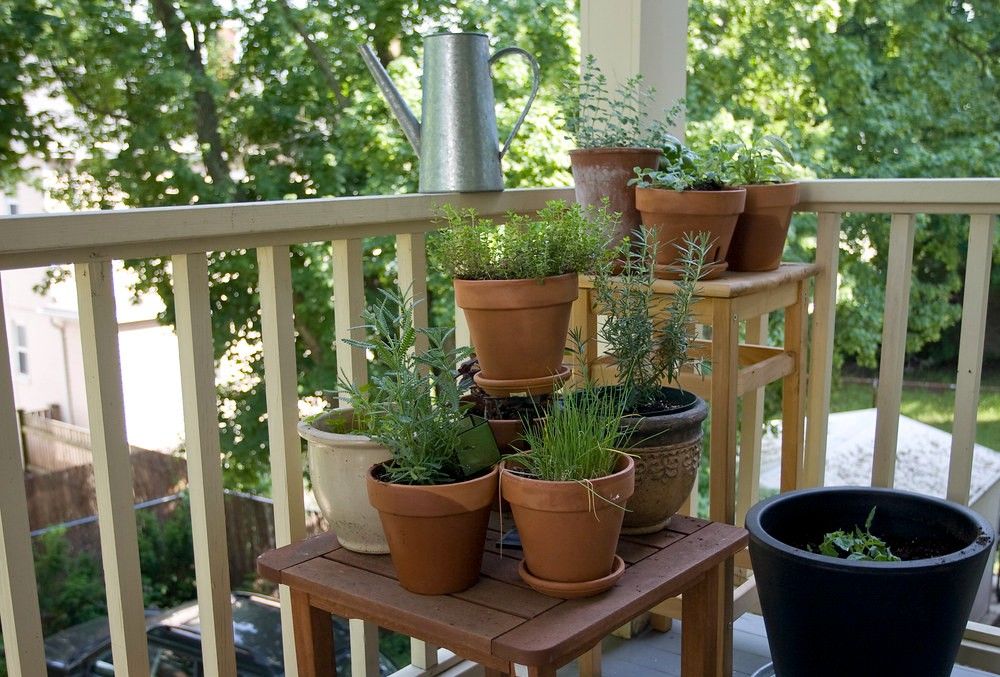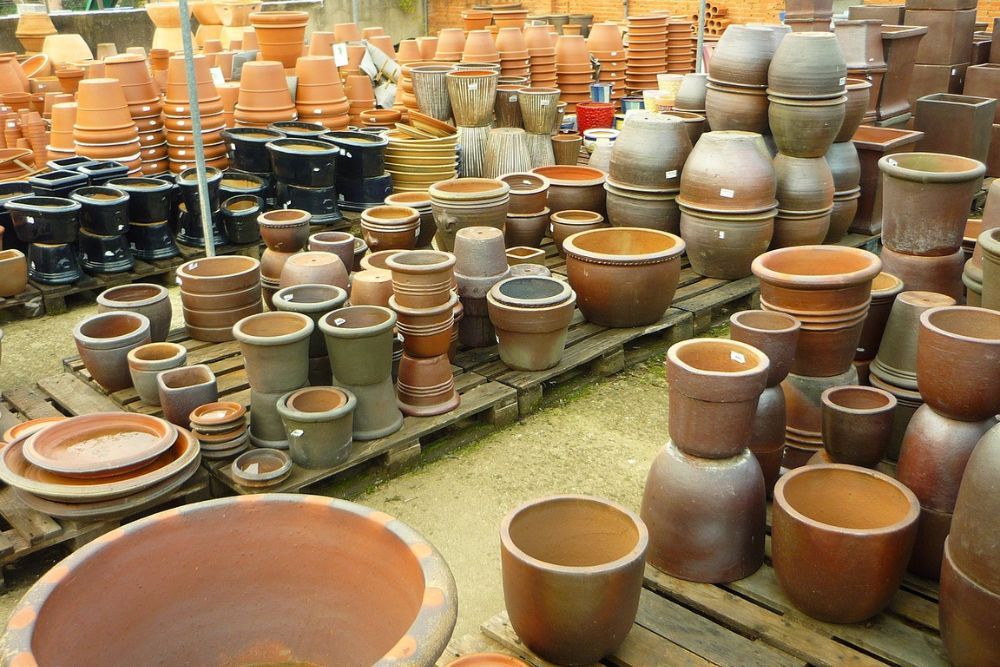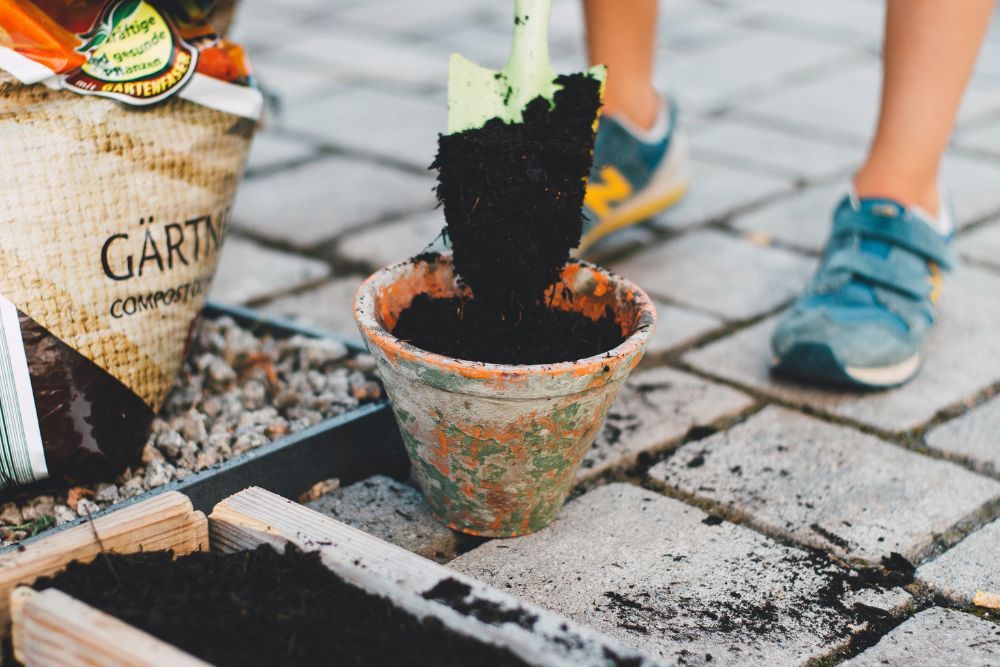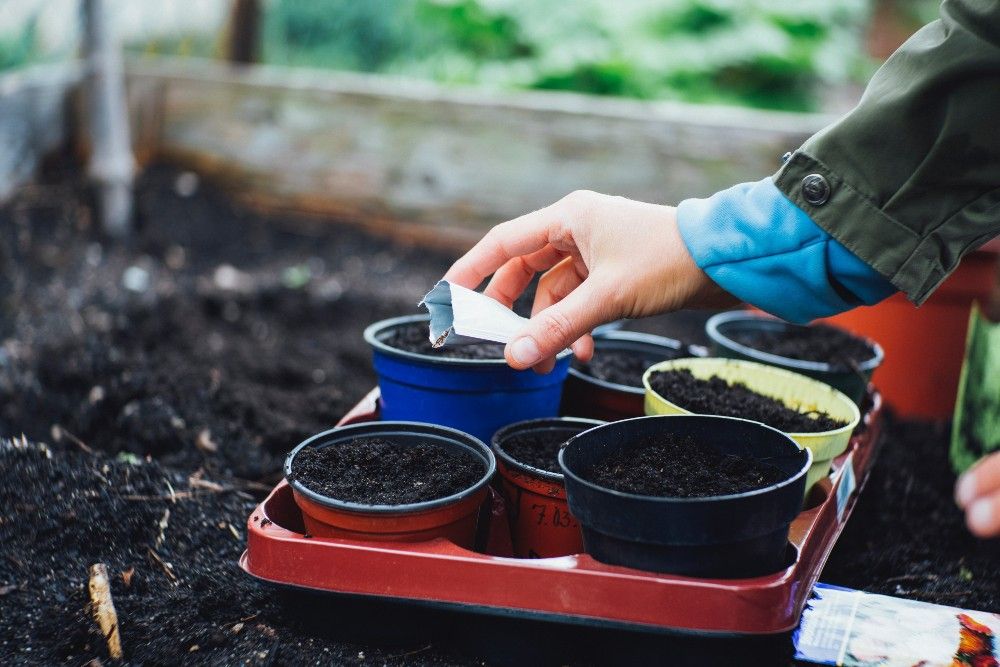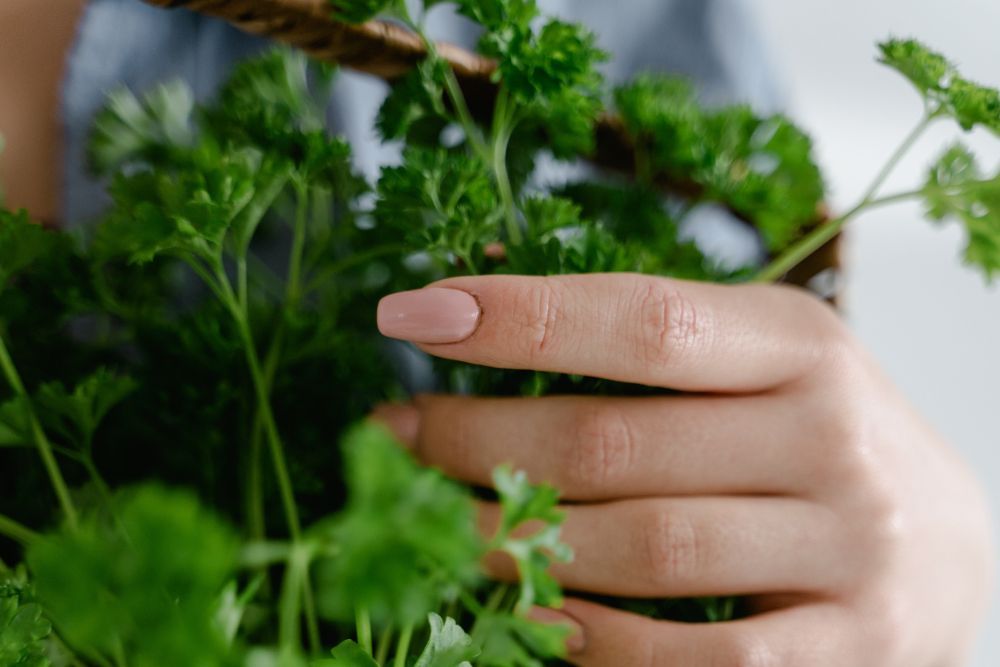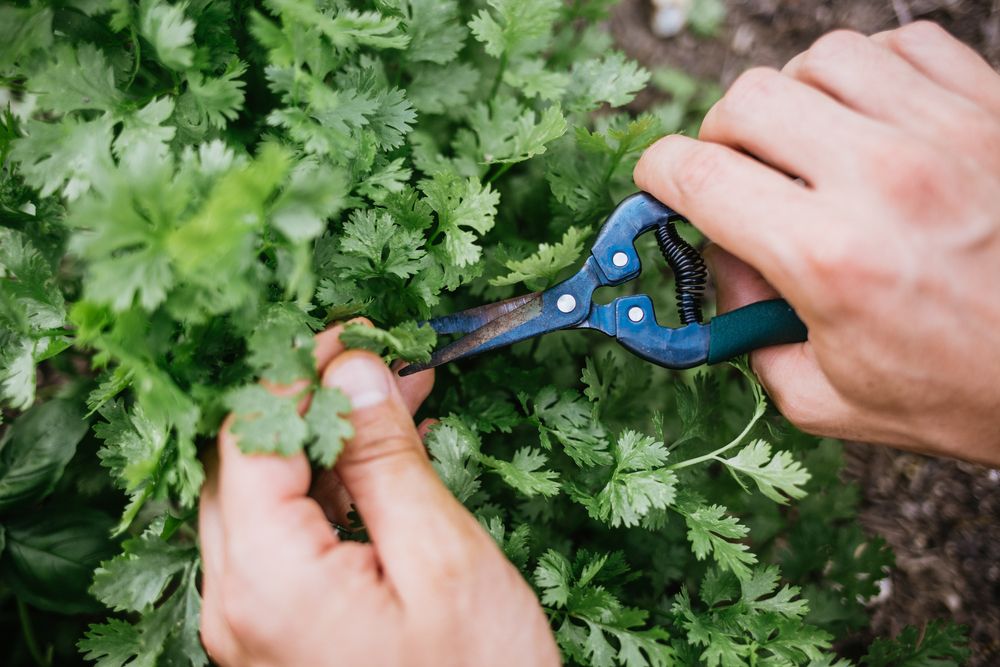Herbs can be expensive to buy at the supermarket, especially if you use a lot of them in your cooking. Growing cilantro in pots at home is an excellent way to save money on your grocery bill. Plus, you won't have to go to the store whenever you need it for a recipe.
Furthermore, cilantro is a delicate herb that loses its flavor quickly once picked. Growing your own allows you to have a continuous, fresh, and flavorful supply at your fingertips. Learn everything you need to know about growing cilantro in containers.
What You'll Need
Image credits: KitAy via Openverse
Before getting started, gather a few necessary supplies to set up your container garden.
- A pot with drainage holes
- Cilantro seeds
- Well-draining potting soil
- Nitrogen-rich fertilizer
- Watering can
- Scissors or pruners for harvesting
Growing Cilantro in Containers
Container gardening comes with numerous advantages. It gives you more control because you can move the pots to adapt to changing weather and lighting conditions. Also, container gardening allows you to grow numerous plants in small spaces, like a balcony, patio, or on a sunny windowsill.
Cilantro (Coriandrum sativum) is an herb with many names. In the US, the leaves are called cilantro, and the seeds are coriander. In other countries, both leaves and seeds go by coriander.
Cilantro grows well in potted homes if you follow these essential tips and tricks.
Step 1: Find a Suitable Location
Image credits: liza31337 via Openverse
Cilantro is a cool-season herb and prefers temperatures between 50 and 85 degrees Fahrenheit. In addition, the plants grow best in full sun to partial shade. Choose a location that gets at least four to six hours of bright light throughout the day for best results.
Cilantro plants will bolt (prematurely produce flowers and seeds) in hot weather, and the leaves turn bitter and inedible. Be sure to place your cilantro pots in a spot with afternoon shade if you live in a hot climate.
Step 2: Pick Your Pot
Image credits: Francisco Leão via Pixabay
Cilantro plants are relatively small and don't require a lot of space, so a pot at least 6 to 8 inches deep and wide should be sufficient for one or two plants. If you want to grow more plants, you'll need a larger pot.
Using a container with drainage holes is vital. If water doesn't drain out of the pot, the soil becomes waterlogged, and the roots cannot absorb sufficient oxygen and nutrients. Soggy soil often leads to root rot and other fungal diseases.
Step 3: Prepare the Container
Image credits: Markus Spiske via Pexels
Choosing the right soil is essential for container gardening success. Once you've found the perfect pot, fill it up to an inch below the rim with high-quality potting soil. Look for a potting mix with perlite for drainage and aeration, and coconut coir and compost for moisture retention and nutrients. Or, try making your own potting soil at home.
Step 4: Plant Seeds
Image credits: Markus Spiske via Unsplash
Next, it's time to sow seeds. Plant cilantro seeds 1/2 inch deep and 2 inches apart. Keep the soil consistently moist during germination and while the seedlings develop. Soil temperatures must be between 55 and 68 degrees for cilantro to germinate.
If you'd like to harvest coriander seeds, thin the seedlings out, so they're 8 to 10 inches apart to allow for ample growth. On the other hand, plant spacing should be about 6 inches if you're growing cilantro for its leaves.
Step 5: Cilantro Plant Care
Image credits: Tima Miroshnichenko via Pexels
Although cilantro plants need consistent soil moisture, it's crucial to avoid overwatering. On average, give your cilantro about 1 inch of water per week, or more in especially hot or dry weather.
In addition, cilantro plants need plenty of nutrients to produce a sufficient harvest. Feed your plants with a high-nitrogen fertilizer or organic compost once or twice throughout the growing season.
While cilantro is generally a low-maintenance plant, monitoring for signs of pests or diseases is still beneficial. They're sometimes susceptible to powdery mildew, which looks like white dust. Effective remedies include neem oil, sulfur fungicide, and potassium bicarbonate. Treatment works best when applied early.
Insects like aphids and leaf hoppers are some of the most commonplace cilantro pests. If you see signs of a severe infestation, spray the plants with insecticidal soap, neem oil, horticultural oil, or a DIY insecticide spray. Or, dust them with diatomaceous earth.
Step 6: Time to Harvest
Image credits: Megan Betteridge via Shutterstock
Start harvesting cilantro when the plants are at least 6 inches tall. Use a clean pair of scissors or pruning shears to cut the stems. However, leave at least half of the leaves intact so the plant has enough energy to keep growing. Harvest cilantro regularly to encourage new growth and control its size and shape.
When it starts bolting, harvest the whole plant at once unless you're collecting coriander seeds. In that case, leave it alone for another two or three weeks until the seed pods turn light brown and the rest of the plant has dried.
Herb Your Enthusiasm
Growing cilantro and other herbs at home is an incredibly satisfying DIY project. There's nothing quite like using homegrown herbs in the kitchen. Cilantro has a unique, lightly citrusy flavor that pairs well with various recipes, from Latin American cuisine to Asian and Middle Eastern dishes. It's also a popular garnish and adds rich flavor to salads, sauces, soups, and more.
Did you find these container gardening tips helpful? Be a cilantro-pist and share this article with your green-thumbed friends and family!

